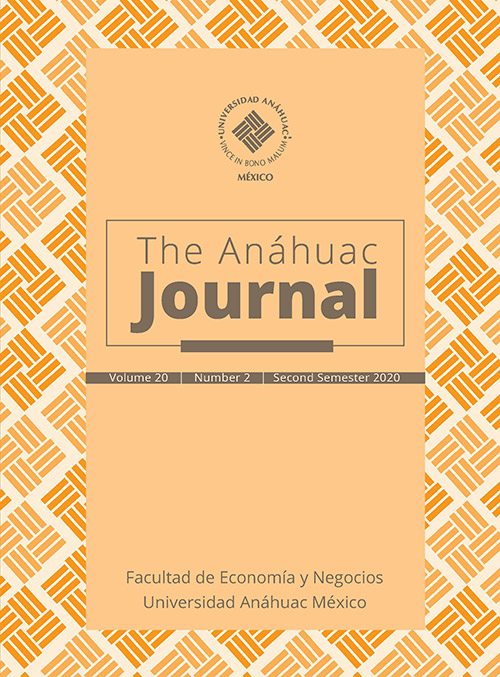Characteristics of the Mexican entrepreneur: case study Lean Startups Mexico
Main Article Content
Abstract
The entrepreneurial profile has been a widely discussed topic in the literature, however, there is not enough literature with the characteristics of the Latin American entrepreneur, due to its main focus on other regions. This study compares what talents are present in entrepreneurs who manage to establish a company, versus those who fail. To do this, a sample of 33 leaders of entrepreneurial teams was selected, from four entities in Mexico, that belong to a total population of 60, who participated in the Lean Startups Mexico program and were trained with Lean Startup methodology. They filled an inventory created for the Talent Motivation Analysis (TMA) methodology, and finally, a descriptive analysis of the results was carried out, concluding that there are outstanding talents typical of entrepreneurs, regardless of their geographical area, others where the environment makes a difference and some more that are not necessarily present in their innate abilities. In addition to this, it was concluded that, despite having gone through the training and mentoring process in the Lean Startup methodology, most of these entrepreneurial talents, especially customer orientation and innovation, showed minimal or even a reduction in the impact, in opposition to what proposed method results.
Downloads
PLUMX Metrics
Article Details
This work is licensed under a Creative Commons Atribución-NoComercial-CompartirIgual 4.0 Internacional.
References
dam/doingBusiness/country/m/mexico/MEX.pdf
Blank, S. y Dorf B. (2012). The Startup Owner’s Manual: The Step By Step, Guide for
Building a Great Company. New Jersey: John Willey and Sons.
Dorf, B. (2015). Lean Startups México (archivo de audio; entrevista). México: Universidad
Anáhuac/Centro Idearse.
Fuentelsaz, L. y Montero, J. (2015). «¿Qué hace que algunos emprendedores sean
más innovadores?». Universia Business Review, 47: pp. 14-31.
Gartner, W. (1988). «Who is the entrepreneur? Is the wrong question». Entrepreneurship
-Theory and Practice, Vol. 13 (4): 47-67.
Global Entrepreneurship Monitor, GEM (2019). GEM 2018/2019 Global Report. Recuperado
en noviembre de 2019 de: https://www.gemconsortium.org/
Grupo de Desarrollo Regional del Tecnológico de Monterrey (2018). «Las megatendencias
sociales actuales y su impacto en la identificación de oportunidades de negocios
». FEMSA, Tecnológico de Monterrey. Recuperado en noviembre de 2018 de:
https://portaldoc.itesm.mx/pls/portaldoc/docs/PORA3_1_20012012143447.pdf
Instituto Nacional de Estadística y Geografía, INEGI (2020). Censo Económico 2020.
https://www.inegi.gob.mx
Iturbide, L. (2 de mayo de 2018). «La importancia del emprendimiento». El Universal.
Koellinger, P. (2008). «Why are some entrepreneurs more innovative than others?».
Small Business Economics, 31: 21-37.
Kurakto, D., Fisher, G. y Audretsch, D. (2020). «Unraveling the entrepreneurial
mindset». Small Business Economics: 205-220. https://doi.org/10.1007/s11187-
020-00372-6
Lackéus, M. (2015). Education in Entrepreneurship. París: OECD.
Lean Startups México (2018). «El programa». Recuperado en noviembre de 2019 en:
https://leanstartupsmexico.com.mx
Lindner, J. (2018). «Entrepreneurship Education for a Sustainable Future». Discourse
& Communication for Sustainable Education, vol. 9 (1): 115-127. https://doi.org/10.
2478/dcse-2018-0009
López, E. (5 de febrero de 2019). «Un buen emprendedor no solo se basa en tecnología
». El Empresario. Recuperado en diciembre de 2019 de: http://elempresario.
mx/emprendedores/buen-emprendedor-no-solo-se-basa-tecnologia
Luor, T., Lu, H., Yu, H. y Chang, K. (2014). «Trends in and contributions to entrepreneurship
research: a broad review of literature from 1996 to June 2012».
Scientometrics 99: 353-369. https://doi.org/10.1007/s11192-013-1203-5
Martínez-Marbán, P. (2018). Documento oficial de Certificación de TMA 2018. México:
Arancione. https://arancione.com.mx/
Montoya Marulanda, J., Correa Calle, G. y Mejía Mejía, L. (2009). «Emprendimiento:
visiones desde las teorías del comportamiento humano». Revista de la Escuela de
Administración de Negocios, 66: 153-168.
Murray, H. A. (1938). Explorations in personality: a clinical and experimental study of
fifty men of college age. Londres: Oxford University Press.
Pickers, S. (4 de noviembre de 2015). «¿Cómo determinar el tamaño de una muestra?
». Psyma. Recuperado en diciembre de 2019 de: https://www.psyma.com/
company/news/message/como-determinar-el-tamano-de-una-muestra
Rodríguez, A. (2014). «Emprendimiento, una tendencia mundial». Forbes México. https://
www.forbes.com.mx/emprendimiento-una-megatendencia-nivel-mundial/
Shaver, K. y Scott, L. (1991). «Person, Process, Choice: the Psychology of New Venture
Creation». Entrepreneurship and Regional Development 27 (2): 1-47.
Solomon, G. y Fernald, L. (1993). «Innovative Approaches to Meeting Entrepreneurial
Informational Needs: SBA Enters the XXI Century». Journal of Creative Behavior,
vol. 27 (2): 103-111.
Schumpeter, J. (1934, 2013). Innovación y destrucción creativa. Madrid: Belloch Ediciones.
Timbergen, N. (1963). «On aims and methods of ethology». Ethology, 20 (4): 410-433.
Uriguen Aguirre, P., Pizarro Romero, J. y Cedeño Flores, J.E. (2018). «Metodologías de
emprendimiento usadas en la universidad ecuatoriana: el caso de una institución
de educación superior orense». Universidad y Sociedad, 10 (3): 309-315.
Van IJzendoorn, E., Van Weert, L., Müller, B. y Blom, A. (2010). From Talent to Performance.
Utrecht: Ehrm Vision.
Vázquez-Parra, J. C. (2018). «Elementos para la valoración integral de proyectos de
emprendimiento social. Una herramienta para la formación de emprendedores
». Contabilidad y Negocios, 13 (26): 129-140.
Venkataraman, S. (1997). «The distinctive domain of entrepreneurship research: an
editor’s perspective». En J. Katz y R. Brokhaus (eds.). Advances in Entrepreneurship,
Firm Emerge, and Growth. Greenwich, JAI Press, vol. 3: 119-138.

